Google's new Pixel Watch 4 may have dethroned its predecessor (at least on paper) as our favorite Android Watch, setting a new standard for the rest of the smartwatch world.
The company debuted its latest smartwatch at its Made by Google event alongside its new phone lineup and budget-friendly earbuds. With an AI-powered health coach, improved battery life, first-of-its-kind satellite connectivity and easier repairs, the $350 Pixel Watch 4 feels like it was pulled straight from my personal wishlist. If it can deliver on all those promises, it may even give the next Apple Watch a serious run for its money.
Compared to decade-long veterans like Samsung's Galaxy Watch and Apple Watch, the Pixel Watch still feels like the new kid on the block. But from the start, it's nailed that sweet spot between stylish hardware, robust (Fitbit-powered) health features, and seamless integration with Google's ecosystem. Rather than coasting on what already works, Google keeps addressing pain points to make each Pixel Watch better than the last. Now the Pixel Watch 4 marks what the company calls the biggest overhaul since the product first launched.
Don't miss any of CNET's unbiased tech content and lab-based reviews. Add us as a preferred Google source on Chrome.
Pixel Watch 4 pricing and availability
The Pixel Watch 4 is available for preorder now and in stores Oct. 9. Pricing starts at $349 (£349, AU$579) for the 41mm Wi-Fi model and $399 for the larger 45mm. LTE versions add $100 across the board, at $449 and $499, respectively. Every LTE model also comes with two years of Google Fi data when purchased through the Google Store or Best Buy. The watch also will ship with 32GB of storage Google's latest Wear OS 6 and, as always, will be first in line for future updates.
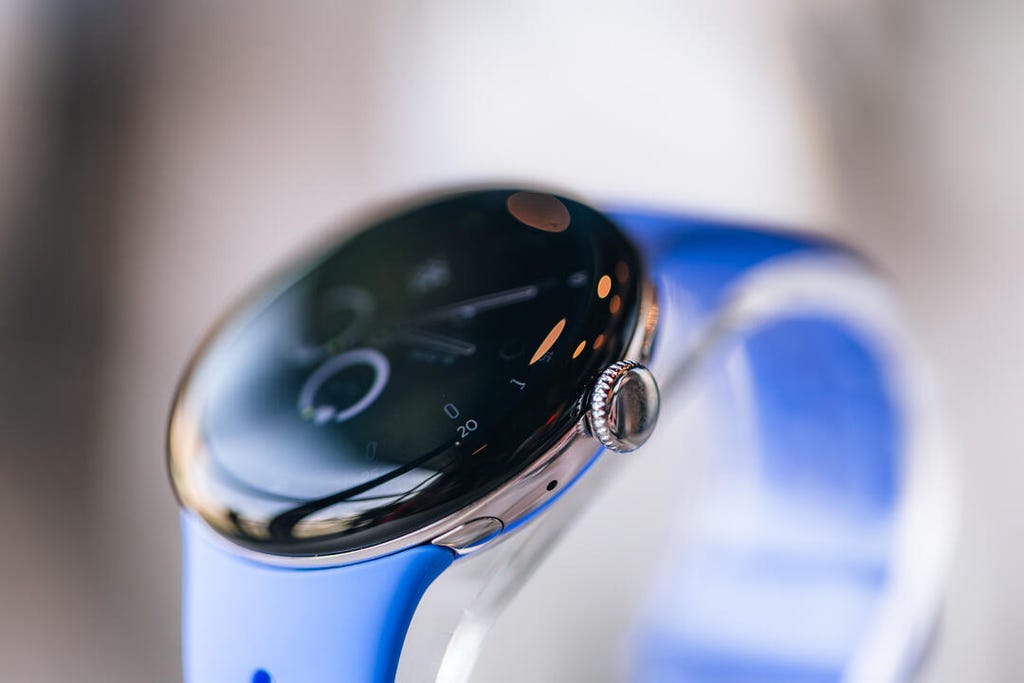
The Pixel Watch 4 has a familiar design with an upgraded domed screen that's 50% brighter than the Pixel Watch 3, with a 3,000-nit peak. Joseph Maldonado/CNET
Pixel Watch 4 screen upgrades
At first glance, the Pixel Watch 4 looks a lot like its predecessors. It has the same frameless circular domed screen that seems to bubble up from the center and a metal rotating crown that adds a touch of polish. You still get 41mm and 45mm sizing options but the screen itself is larger thanks to smaller bezels that are 16% thinner and add 10% more usable area.
The screen also looks better at a glance. Its more pronounced dome creates a wider viewing angle and brightness has jumped by 50%, hitting a 3,000-nit peak that makes it one of the brightest smartwatch screens. In theory, that means less squinting at your workout metrics when the sun's beating down your back.
The screen upgrades look especially nice combined with Material 3 Expressive, Google's latest UI update tailored specifically for the wrist. The display doesn't just look better, it behaves more fluidly. UI elements like buttons and tiles now hug the curve of the screen and colors adapt to match the watch face you chose.
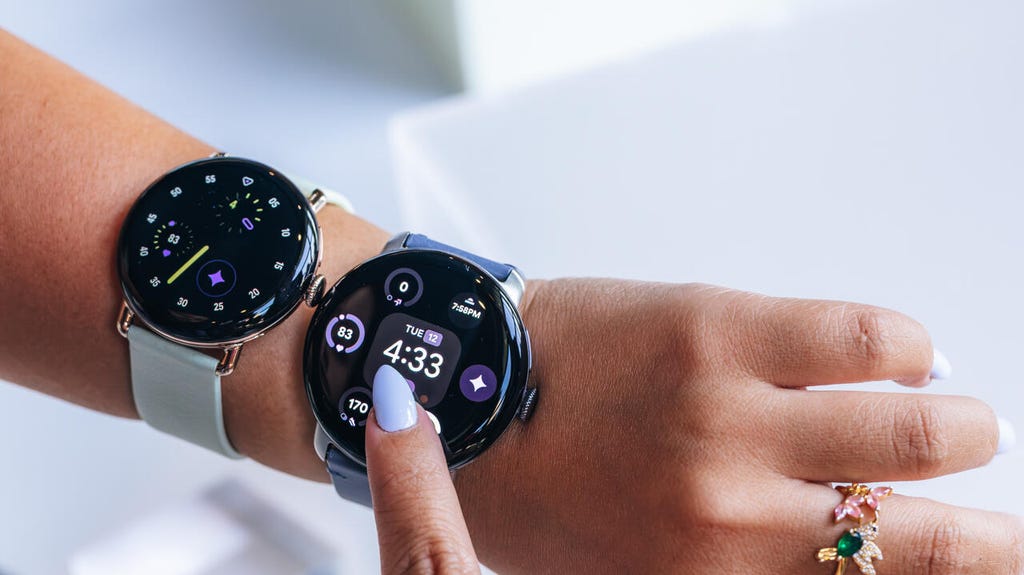
The 41mm Pixel Watch 4 (left) and the 45mm Pixel Watch 4 (right) in polished silver. Joseph Maldonado/CNET
Pixel Watch 4 AI coach
The feature I'm most excited to try -- and the one that could truly elevate this watch above the rest -- is a new AI health coach built on Gemini (Google's AI voice assistant). Unlike Samsung's Running Coach or Apple's Workout Buddy, this isn't limited to workout data. It's designed to connect the dots across all your health metrics, offering a more holistic view of how activity, sleep and recovery work together.
The feature will roll out in October as a preview through Fitbit Premium in the redesigned Fitbit app and will also be coming to the latest Fitbit trackers and smartwatches. Fitbit says the experience will grow over time as they gather feedback, but at launch, you'll be able to interact with it directly and ask specific health questions like, "How do I improve my VO2 max?" or, "Should I get an extra hour of sleep or workout tomorrow morning?" This could add a new layer of contextual guidance on top of the Pixel Watch's already helpful health tools, like its personalized running programs and a body-response sensor that flags potential signs of stress.
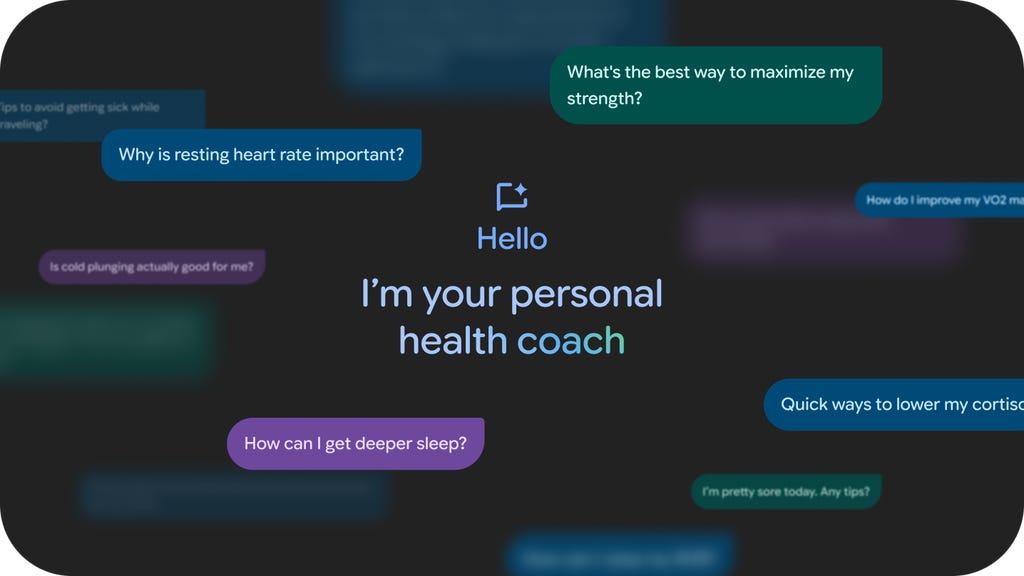
The Pixel Watch 4 has a new AI coach built on Gemini that can act as a personal health concierge to help you make sense of all your health data. Google
Execution will be key, but if Google delivers, this could be the closest we've come to the true health concierge that I've been dreaming of on a smartwatch.
The Pixel Watch 4 will also be better at detecting workouts with new AI-powered activity recognition, which can retroactively flag a session in the app and ask you to confirm if you forgot to hit start. Cyclists can now stream ride stats to their phone as a heads-up display, and the upgraded temperature sensor tracks more detailed variations in skin temperature.
The Pixel Watch 4 brings Gemini to the wrist
Outside of health, Gemini is fully integrated into the Pixel Watch 4 from day one, and it's a massive step up over any other voice assistant we've tried. A new gesture means you won't even have to say, "Hey Google," just raise your wrist and start talking. An upgraded speaker and stronger haptic engine also makes Gemini's responses easier to hear and alerts harder to miss, so it feels more natural to use without pulling out your phone. Because Gemini processes everything in the cloud, you'll still need either your phone nearby or an LTE connection for it to work.
The Pixel Watch 4 will have Google's AI voice assistant (Gemini) built in. Google
Pixel Watch 4 battery improvements
Battery life has always been a weak spot for the Pixel watch, so there was a lot of room for improvement. The Pixel Watch 3 barely hit its 24-hour claim with the always-on display enabled, often falling short for overnight tracking. The Pixel Watch 4 addresses this with a dual-chip setup (Snapdragon W5 Gen 2 plus a Cortex-M55 co-processor) that Google says boosts battery life by 25%. That means up to 30 hours on the 41mm model, 40 hours on the 45mm, or as much as three days in low-power mode.
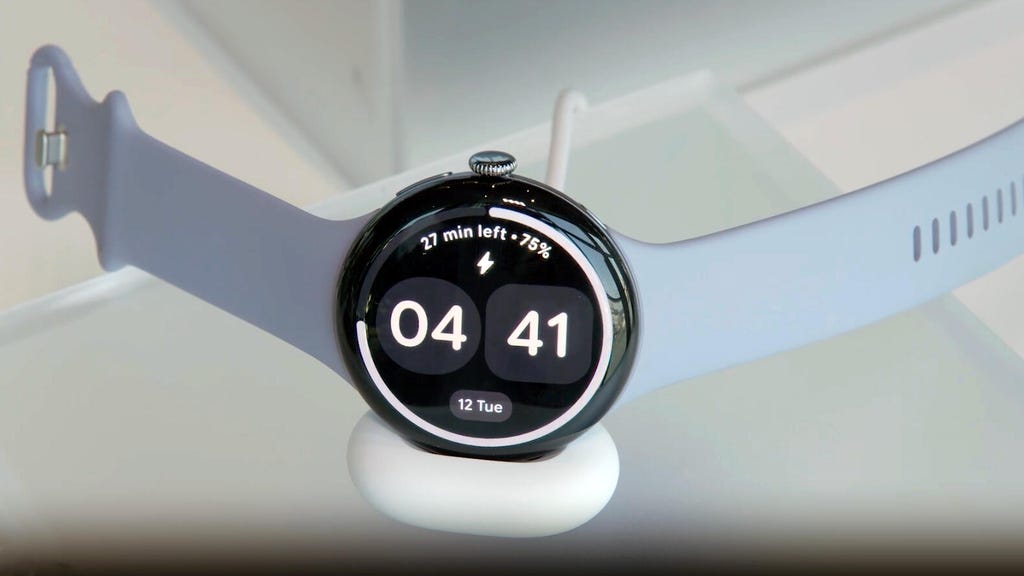
The Pixel Watch 4 comes with a redesigned quick-charging dock that can power it from 0 to 50% in just 15 minutes. Carly Marsh/CNET
Just as important: it now charges faster. You can get to 50% in just 15 minutes, or wait an hour for a full charge. That quick top-up could make a huge difference for 24/7 health tracking especially if you only have a few minutes to charge before starting the day or heading to bed. The secret behind the faster charging is a new side-mounted charging dock (included in the box), though you'll need a 30W or higher wall plug (not included) to take full advantage.
Easier repairs
If the battery gives out completely and needs to be replaced, Pixel Watch 4 owners won't be out of luck. Google made the battery and display swappable, meaning accredited providers can handle repairs more easily (please don't try this yourself). That's a rarity in the smartwatch world, where cracking open the hardware for fixes is almost unheard of.
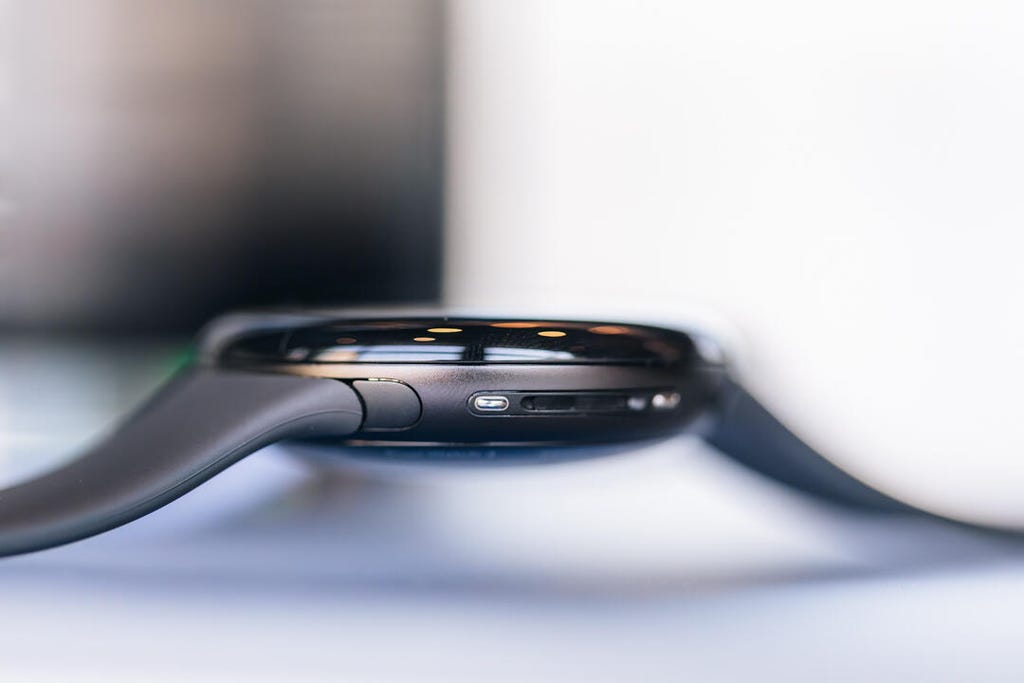
The Pixel Watch 4 has a replaceable battery and display for easier repairs. Joseph Maldonado/CNET
Pixel Watch 4 supports satellite SOS
The Pixel Watch 4 is the first smartwatch to support emergency satellite communication. That means even if you're completely off the grid (without a phone or cell service) the Watch 4 can still connect to a satellite to send an SOS message and share your location. It's a powerful addition to an already robust safety suite that includes fall detection, crash detection and loss-of-pulse alerts, and it could be a game-changer for outdoor athletes, frequent travelers or anyone living in areas with spotty coverage.
Unlike Apple's Emergency SOS via satellite, which still requires an iPhone to relay messages, Google has cut out the need for a Pixel phone to be a middleman and instead handles all communication directly from the Pixel Watch 4
Location tracking also gets a boost thanks to dual-frequency GPS. This means more precise tracking in tough environments like dense cityscapes (where tall buildings can bounce signals) or deep wilderness trails. Satellite connectivity will be limited to LTE versions for now, while dual-band GPS will be available on LTE and Wi-Fi models.






